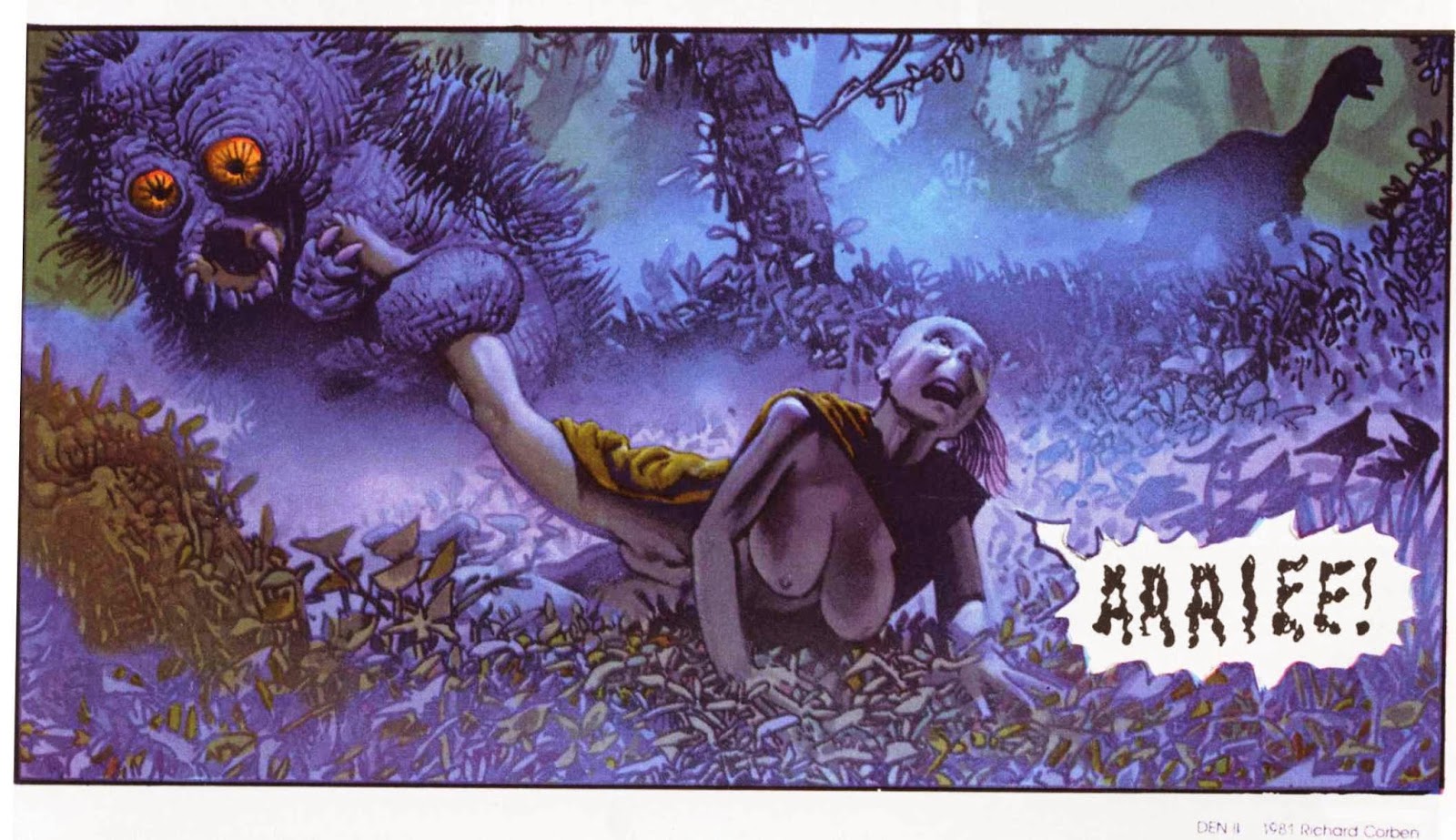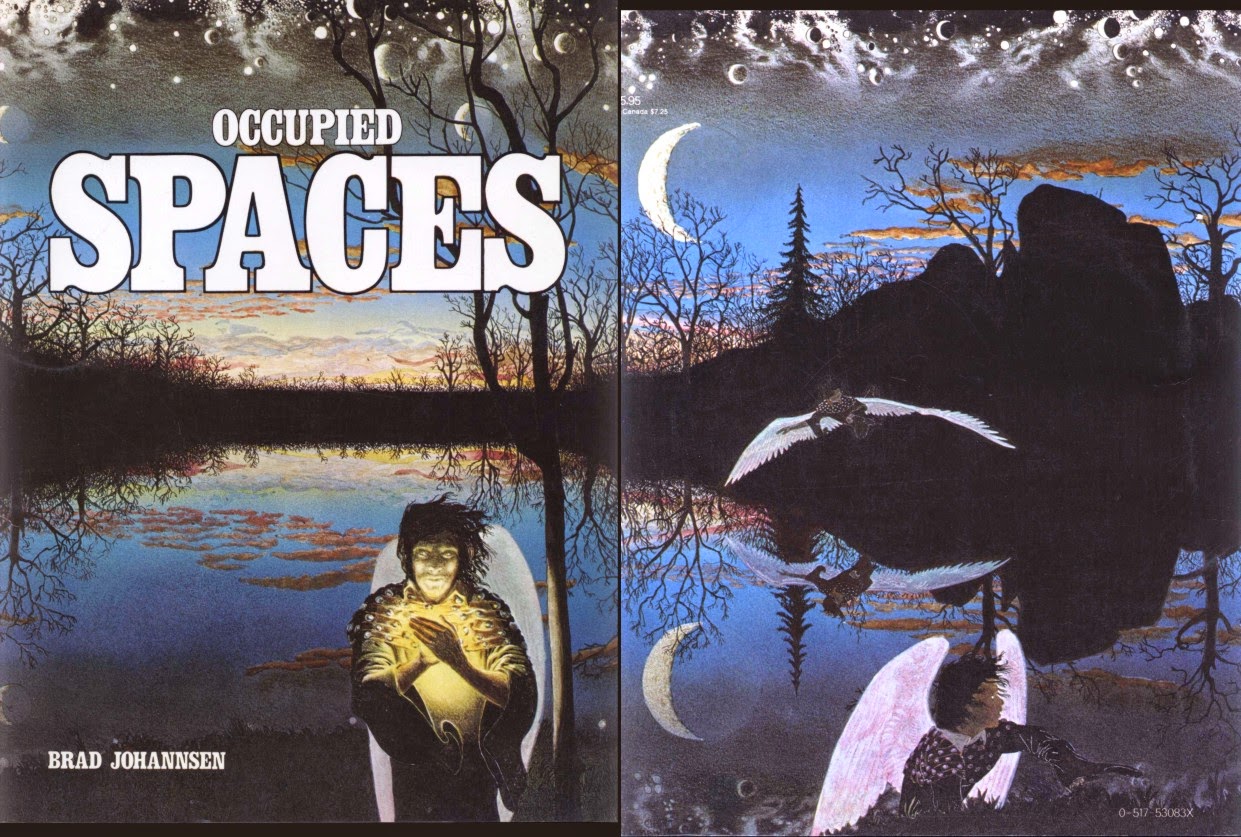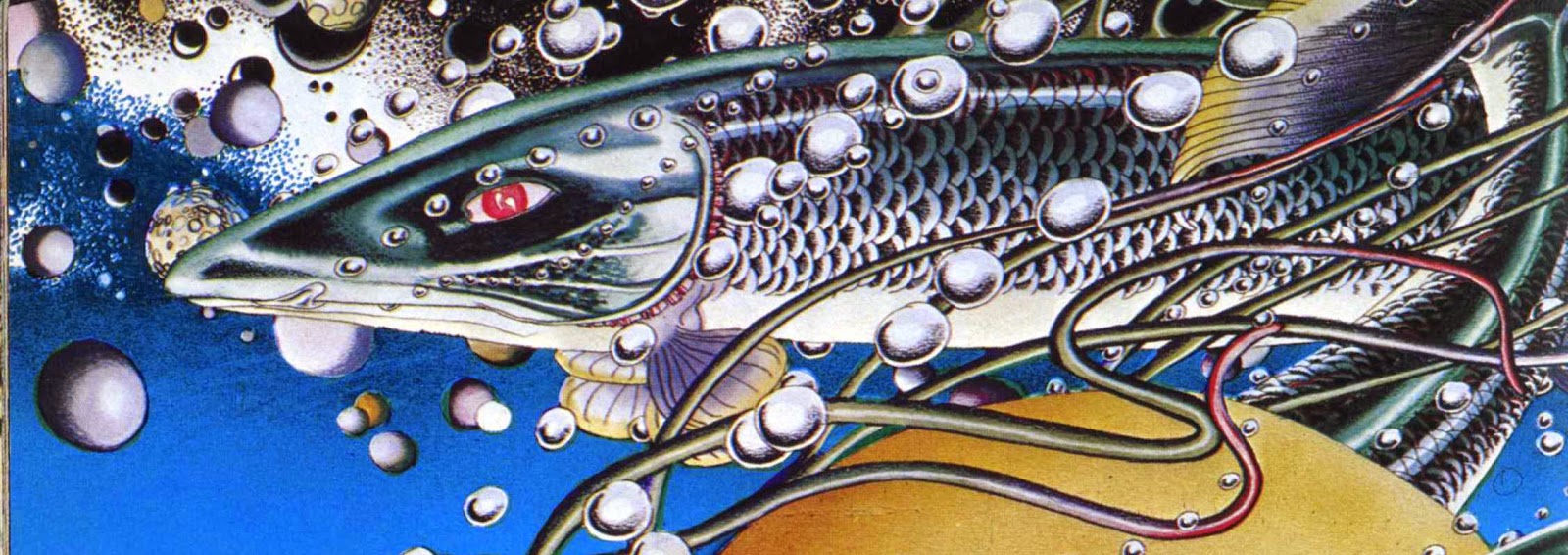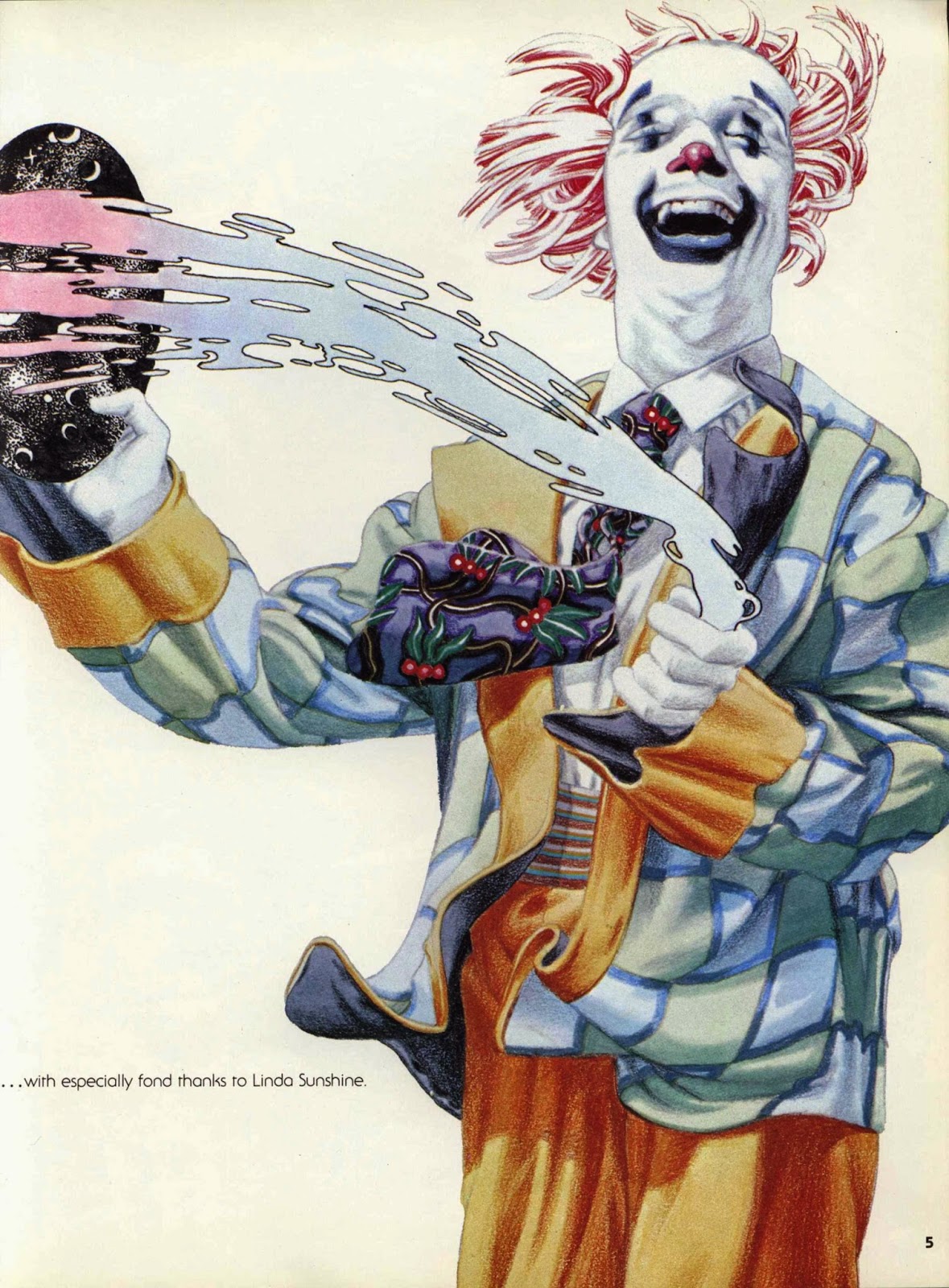by Richard Corben
'Den II: Muvovum' was one of the longest-running serials in Heavy Metal magazine, running in 13 parts from September, 1981 all the way to March, 1983.
While these installments all were very short in length, each of them delivered the D-cup imagery, T & A action, and sly humor that made the HM readership fond fans of Corben's work.
This trade paperback from Catalan Communications was printed in 1984, and compiles the entire 13-part series. It's a quality trade paperback, with 'slick' paper and very good color separations that show off Corben's unique color printing process - all the more impressive when you consider this was the early 80s, well before PC-based coloring was a mainstay of the industry.
It's not necessary to have read the first installment of 'Den' ('Den: Neverwhere') in order to understand the comparatively simple plot of 'Den II'. Without disclosing any spoilers, Den joins his friends in Zegium for a trip to the neighboring territory of Muvovum, there to search for the powerful Stones of Nar, the magic of which can transport Den (and his increasingly truculent girlfriend Kath) back to Earth.
No sooner have Den and Kath been transported to Earth, when trouble arrives in Zegium, in the form of the Queen, who seeks the Stones for her own use.
Events get even more dire when Den's friend Tarn goes astray in the Dramite country of Muvovum. Be prepared for some uniquely gruesome monster action......
It's up to Den to return to Neverwhere and set things aright....but he's not going to have it easy.
The softcore porn sequences that may have seemed racy back in the early 80s will probably be observed by contemporary readers with eye-rolling amusement; however, no matter how young and hip you are, Corben's artwork should impress.
'Den II' is an entertaining comic, whether you're reading it for nostalgia value; as an accompaniment to getting stoned; or both. I was fortunate to get this reasonably good-condition copy of 'Den II' for $5. Unfortunately, copies of this trade paperback compilation in good condition go for exorbitant prices.........indeed, this is true for many of the compilations of Corben's work Catalan issued in the 80s.
Maybe Dark Horse / New Comic Company, or UK publisher Titan Books, will reprint some of this work in new, affordable compilations.....?!
















































































